Following 16 years of restoration work, the Palace of Aigai has finally opened to visitors. Situated in the modern-day town of Vergina, Aigai was the capital city of the ancient Kingdom of Macedonia. Its magnificent palace—one of the largest and most elegant edifices of classical Greece—was built by King Philip II in the 4th century BC. That’s where his son, Alexander the Great, was crowned and set off to conquer half the known world. We took the opportunity to visit it during our recent road trip to northern Greece.
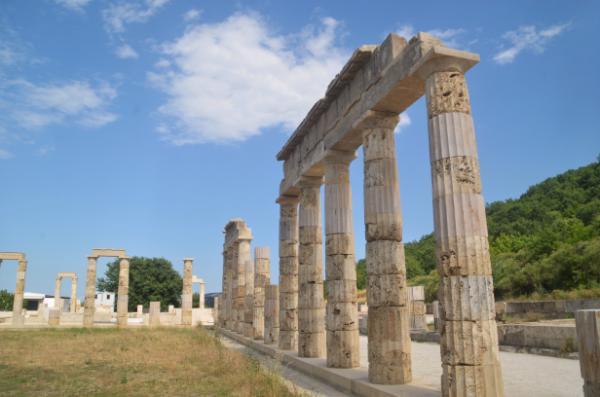
After a four-hour drive from my hometown of Chalkida, we arrived at the peak of a summer day’s heat. The small town felt rather deserted. We were the only customers in the restaurant at the central square. We waited for the heat to subside over lunch and coffee, then headed to the palace.

The Palace of Aigai
The archaeological site of Aigai and its palace is situated just southeast of the center of Vergina. It takes about 20 minutes to walk there from the town’s bus station. Since we had a car, we drove closer. We could have driven all the way to the entrance, but instead, we parked in the big parking lot 1 km away.
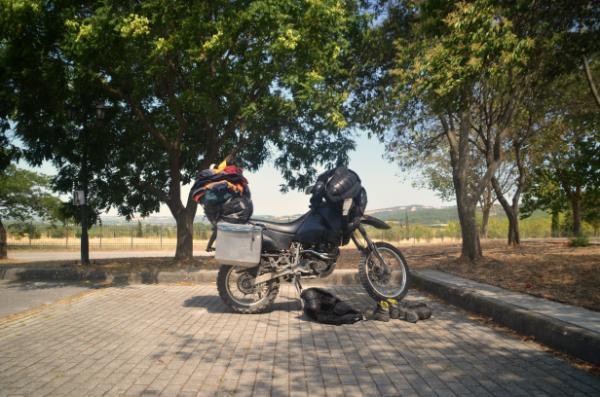
Along the walk, we glimpsed additional ruins of the ancient city: a queen’s burial cluster, a sanctuary of Eucleia (the Greek personification of glory), and a theater. Then, we moved into the palace’s premises.
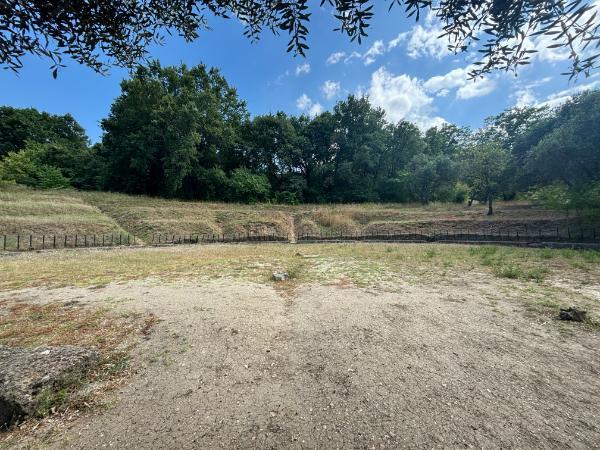
To my pleasant surprise, no entrance fee was required to visit the palace. There wasn’t even a gate. Only a solitary security guard in civilian attire was present, and behind us came two more visitors from Albania. We could explore and marvel at this archaeological treasure in peace.
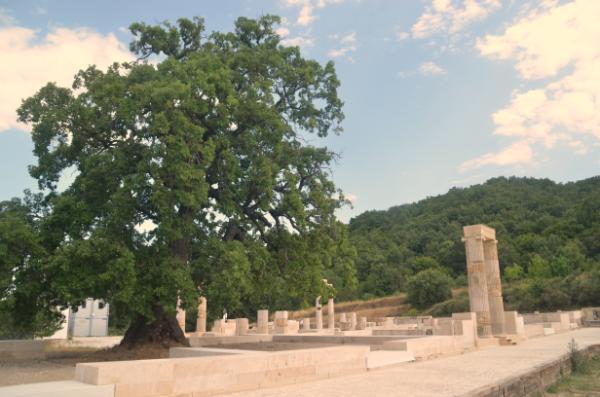
The palace was impressive. It is thought to have been designed by the renowned architect Pytheos of Priene, who is also credited with working on the Mausoleum of Halicarnassus, one of the Seven Wonders of the Ancient World. It stood for almost two centuries before the Romans burned it down after their victory over the Macedonians in the Battle of Pydna in 168 BC. Two more centuries later, a landslide buried whatever was left of it, preserving it for us to see.
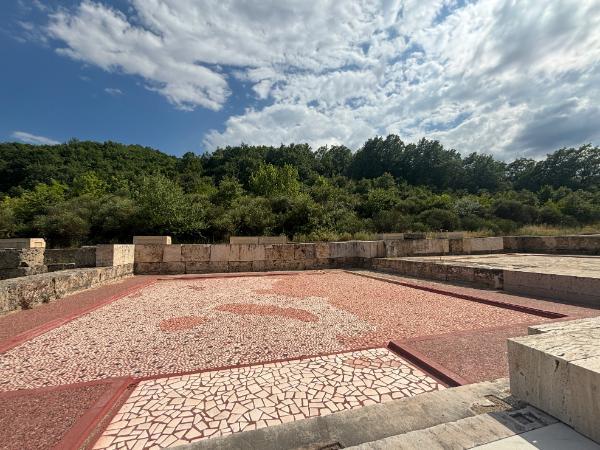
Several of the palace’s massive Doric colonnades had been restored with a combination of original and replicated blocks. Some of the intricate mosaic floors also survived. Huge oak trees—of a kind that is uncommon in southern Greece—surrounded the site and enhanced its beauty. The view was also wonderful. A vast portion of the Macedonian plain was visible from atop the hill, and the great palace, in its prime, would have been conspicuous from throughout the plain.
Museum of the Royal Tombs of Vergina
We then headed to Vergina’s renowned Museum of the Royal Tombs, which is located within the town. After visiting the palace for free, I resented that we had to pay a €15 ticket here. But it was totally worth it. Beyond doubt, this was the most impressive archaeological museum I’ve visited in Greece, if not anywhere.
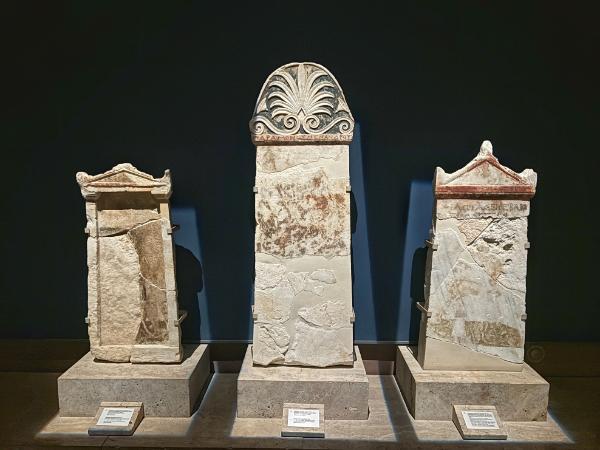
What sets this museum apart is its breathtaking collection of metal artifacts, including exquisite gold items, which are a rare sight in most Greek museums where stone predominates. The gleaming gold larnax adorned with the star of Vergina and the intricate golden wreath of oak leaves found in Philip II’s tomb are nothing short of mesmerizing. These treasures, alongside the finely crafted silver and bronze vessels, weaponry, and jewelry, vividly illustrate the opulence and craftsmanship of the ancient Macedonians.
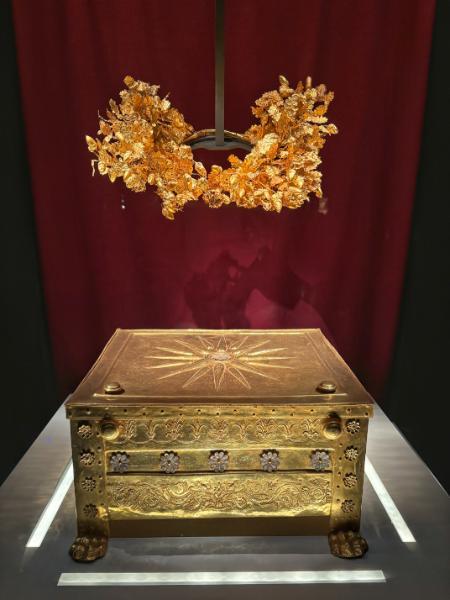
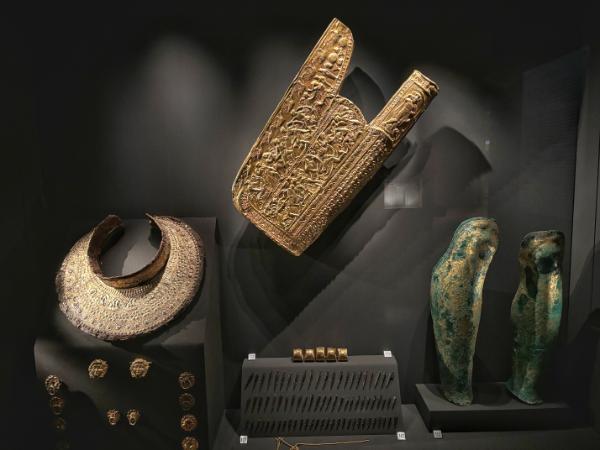
The museum’s discovery history adds another layer of intrigue. The royal tombs were unearthed in 1977 by the Greek archaeologist Manolis Andronikos, a find that revolutionized our understanding of Macedonian history. Walking through the museum, one can’t help but feel a sense of wonder at the incredible preservation and the stories these artifacts tell. It’s a place where history comes to life, offering an unparalleled glimpse into the splendor of ancient Macedonian royalty.
New Vergina Museum
Lastly, we visited the new Museum of Vergina, which was included in the same ticket. Known as the Polycentric Museum of Aigai, it is located a short way out of town, west along the main road. It opened recently, and they’ve still got work to do, particularly in how they receive visitors…
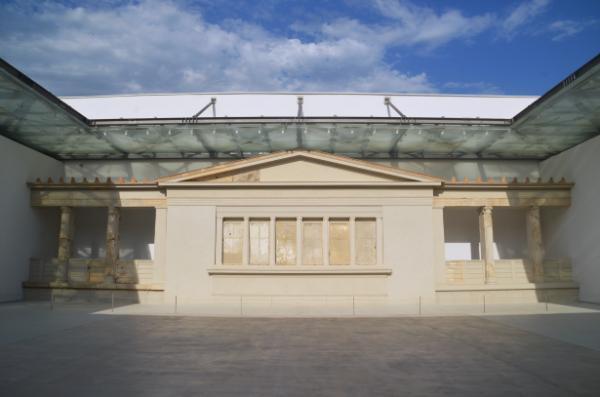
Approaching the site from the center of Vergina, we drove past a spacious parking lot on its east side. We drove past because a sizable no-turn sign prohibited us from entering. I assumed we had to enter from the other side and make a circle. A “P” sign on the other side reinforced my assumption. So I drove up and passed over the walking stone path in front of the museum entrance. Nearly running over a tortoise, I drove down a curb and made it to the parking lot.
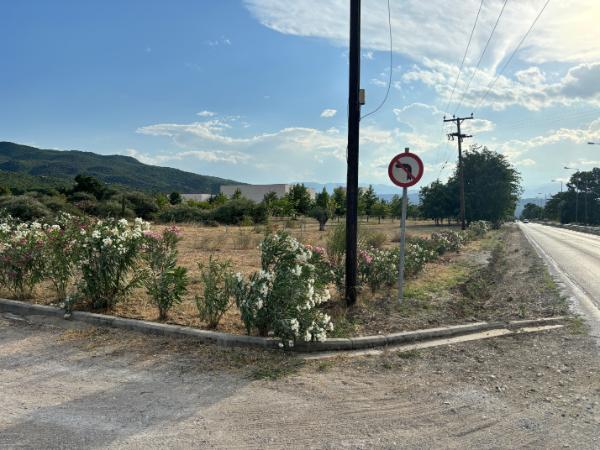
Walking back up to the museum, we were met by an angry director. She told me off for driving up that way, pointed at some spilled coffee stains, and screamed that they were skid marks I made while passing at 5 km an hour. She even threatened to call the tourist police on me. I apologized because my detour now seemed so blatantly dubious that I doubted my senses about the signs I’d seen before. Only after we finished our visit did I see the no-turn sign again and returned to her with a picture. Then it was her turn to apologize… The museum was new, she comes from the other direction and parks up the walking path herself, and for a year and a half now, she hadn’t bothered to check the parking situation.
Anyway, the museum was very interesting: a contemporary complement to the old Museum of the Royal Tombs, offering an expansive, modern, light-filled space dedicated to the broader archaeological findings of the ancient city of Aigai. This state-of-the-art facility is designed to showcase a wide array of artifacts, from daily life implements to grand ceremonial items, providing a comprehensive look at the ancient Macedonian civilization.
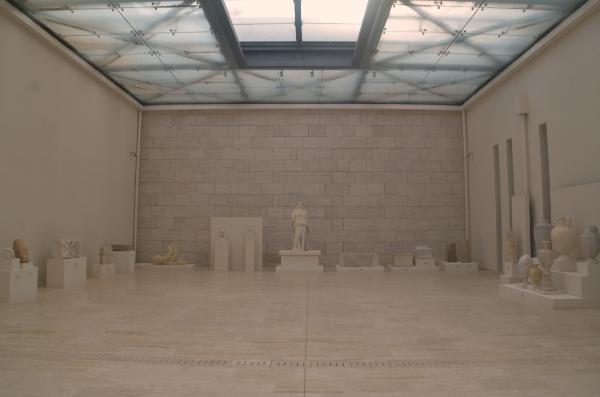
With interactive exhibits, detailed informational panels, and advanced display technology, the new museum enriches the visitor experience by providing deeper insights into the cultural and historical context of the artifacts. The design of the museum itself, with its clean lines and open spaces, enhances the presentation of these ancient treasures, making it a must-visit for anyone interested in the rich history of Greece.
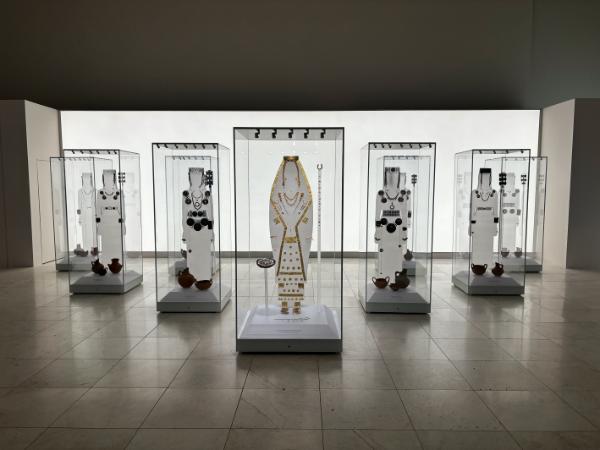
The only downside was, again, that dude from the staff who kept following us around suspiciously. I mean, you surely have security cameras for that job. They are more discreet and they don’t take a salary.
Where to stay in Vergina
If you’re visiting the archaeological wonders of Vergina, you’ll likely want to stay for a night at least and explore at your ease. There are plenty of nice guest houses in town. Check them out on the map below.
In our case, we combined our visit with the Psyland Festival, which was held in a nearby location known as Platania, and we settled over there for the weekend. Great fun. It was its second edition. They will hopefully keep organizing it each year for us to come again. Check it out, you too, if you’re into psytrance and traveling northern Greece in the summer. If otherwise, still check out the location of Platania. Very beautiful and serene.
